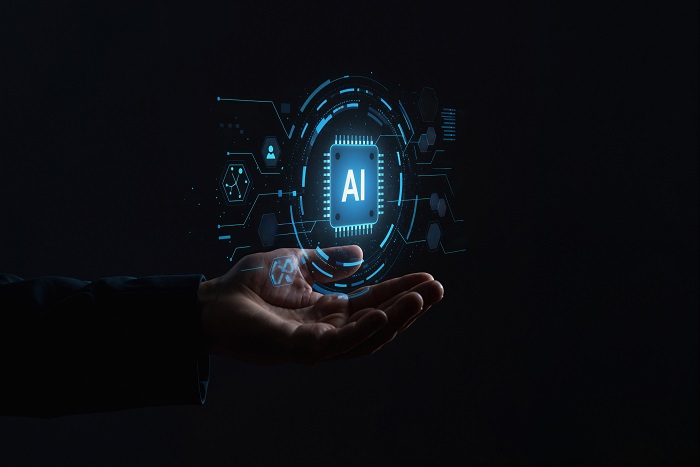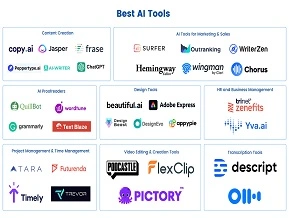Analytics and AI Data Science: Key Differences and How They Work Together?
What is the Relationship Between Analytics and AI Data Science?
In the evolving world of data-driven decision-making, Analytics and AI Data Science are frequently mentioned together—often forming the backbone of modern business intelligence and innovation strategies. While distinct in their core functions, these fields are deeply interconnected and complementary.
Defining Analytics, AI, and Data Science
Analytics refers to the process of examining data to uncover meaningful patterns, trends, and insights. It includes descriptive analytics (what happened), diagnostic analytics (why it happened), predictive analytics (what will happen), and prescriptive analytics (what should be done).
Artificial Intelligence (AI) involves creating systems that can simulate human intelligence. AI uses algorithms to enable machines to perform tasks such as learning, problem-solving, and decision-making.
Data Science is the interdisciplinary field that uses scientific methods, algorithms, and systems to extract knowledge from structured and unstructured data. It combines elements of computer science, statistics, and domain expertise.
The Interconnected Nature of These Fields
AI Data Science & Analytics work in synergy. Data science provides the foundation for AI by processing and modelling vast datasets, while AI enhances analytics by automating data analysis and enabling real-time predictions. Analytics helps interpret AI outputs, making them actionable and understandable for business users.
For example, a data scientist may build a machine learning model (AI) using historical sales data, while an analyst uses the results to forecast future trends and recommend strategies.
Why They are Often Mentioned Together
In modern data-driven roles, professionals are expected to understand and apply concepts from all three areas. The convergence of Analytics and AI Data Science enables companies to make faster, smarter, and more strategic decisions. This integrated approach is now essential across industries, from healthcare and finance to retail and manufacturing.
How Does AI Data Science & Analytics Differ in Purpose and Practice?
In today’s data-centric landscape, Analytics and AI play crucial roles in driving insights and automation. Though they often overlap, their core purposes, techniques, and applications differ significantly in both theory and practice.
Use-Case Comparison: Descriptive, Predictive, and Prescriptive
Analytics typically focuses on descriptive and diagnostic insights—understanding what happened and why. For instance, a marketing analyst may study past campaign performance to explain user behaviour.
AI Data Science & Analytics, on the other hand, excel in predictive and prescriptive tasks. AI data science uses machine learning models to forecast future outcomes (e.g., predicting customer churn) and recommend actions (e.g., dynamic pricing strategies).
While analytics answers "What happened?", AI and data science extend this to "What will happen?" and "What should we do about it?"
Roles and Tools in Each Domain
In analytics, roles often include business analysts or data analysts who use tools like Excel, Power BI, or Tableau. Their work emphasizes dashboards, KPIs, and trend analysis.
In contrast, AI data science roles include data scientists and machine learning engineers. They use advanced tools like Python, R, TensorFlow, and scikit-learn to develop algorithms, build models, and automate decisions.
Differences in Methods: Statistical Analysis vs. Machine Learning
Analytics relies heavily on statistical analysis, such as regression, correlation, and hypothesis testing, to interpret data and identify patterns.
AI data science incorporates these methods but goes further by using machine learning techniques like decision trees, neural networks, and clustering algorithms. These methods can process massive datasets and learn from them without explicit programming.
While Analytics and AI Data Science share data as a foundation, they differ in purpose, roles, tools, and methods—making them complementary but distinct fields essential for modern data strategy.
How Does AI Data Science & Analytics Differ in Purpose and Practice?
In the fast-evolving data landscape, AI Data Science & Analytics represent two complementary yet distinct disciplines. Though often used together, they serve different purposes, rely on unique tools, and follow varied methods to derive insights and drive decisions.
Use-Case Comparison: Descriptive, Predictive, and Prescriptive
Analytics is primarily concerned with descriptive and diagnostic analysis—examining historical data to answer questions like "What happened?" and "Why did it happen?" It helps businesses track performance using dashboards and reports.
In contrast, AI data science focuses on predictive and prescriptive analysis. Predictive models use machine learning to forecast future outcomes (e.g., customer churn, demand spikes), while prescriptive analytics goes a step further, recommending optimal actions (e.g., inventory restocking or pricing strategies).
Roles and Tools in Each Domain
Analytics typically involves roles like business analysts and data analysts who use tools such as Excel, SQL, Power BI, and Tableau. Their responsibilities revolve around querying data, visualizing results, and generating business insights.
On the other hand, AI data science involves data scientists, machine learning engineers, and AI specialists. They work with programming languages and frameworks like Python, R, TensorFlow, and Scikit-learn to build complex models and deploy AI solutions.
Differences in Methods: Statistical Analysis vs. Machine Learning
Analytics relies heavily on statistical techniques like linear regression, correlation, and significance testing to interpret data. It’s ideal for uncovering trends and explaining causality.
AI data science applies machine learning algorithms, neural networks, and natural language processing to detect patterns, makes predictions, and automates decision-making in real time.
While AI Data Science & Analytics often intersect, they differ significantly in purpose, practice, and impact. Understanding these differences helps organizations use both effectively for data-driven growth.
What Tools and Technologies Drive AI Data Science & Analytics Workflows?
Modern AI Data Science & Analytics workflows rely on a broad ecosystem of tools and technologies designed to handle everything from data visualization to model deployment. These tools cater to a variety of users—from business analysts to data scientists—enabling organizations to unlock insights and automate decisions.
Popular Tools: From Excel to TensorFlow
For traditional analytics tasks, tools like Excel, Tableau, and Power BI remain popular due to their ease of use and strong visualization capabilities. These platforms help users track KPIs, create dashboards, and perform basic trend analysis.
In contrast, AI data science workflows require more advanced tools. TensorFlow and Scikit-learn are widely used for building machine learning models, while Databricks offers a collaborative, cloud-based environment for big data processing and model training. These tools enable sophisticated tasks such as classification, prediction, and deep learning.
Cloud Platforms and Automation Tools
Cloud platforms such as AWS, Google Cloud Platform (GCP), and Microsoft Azure are essential to modern AI Data Science & Analytics. They provide scalable storage, processing power, and AI services, allowing teams to build and deploy models more efficiently. Automation tools like Apache Airflow and Kubeflow help orchestrate workflows, manage dependencies, and schedule model training and deployment in production environments.
Importance of Data Pipelines and Model Deployment
Behind every successful AI and analytics project is a robust data pipeline. Tools like Apache Spark, Snowflake, and Fivetran ensure clean, reliable data flows from source to destination. Equally important is model deployment—the process of integrating trained models into real-world applications using APIs, containers, or cloud-based services.
In summary, mastering these tools and technologies is crucial for building effective AI Data Science & Analytics workflows that deliver real business value.
How Do Analytics and AI Data Science Collaborate in Real-World Projects?
In today’s data-driven economy, Analytics and AI Data Science work hand-in-hand to transform raw information into valuable business intelligence. Their collaboration is essential for creating end-to-end solutions that move from descriptive insights to predictive and prescriptive actions.
From Raw Data to Actionable Intelligence
The journey begins with data collection and preparation, a domain where analytics excels. Analysts clean, organize, and visualize raw data using tools like Excel, SQL, and Tableau to understand trends and generate reports. This forms the foundation for AI data science to take over—applying machine learning and statistical models to uncover deeper patterns, forecast future outcomes, and drive automation.
For example, a retail company may use analytics to examine past sales trends, then use AI data science to predict demand and optimize inventory levels.
Real-World Examples across Industries
In marketing, analytics identifies customer segments based on behaviour, while AI personalizes content delivery in real time.
In healthcare, analytics tracks patient outcomes and operational efficiency; AI helps predict disease risks or automate diagnostics.
In finance, analysts monitor transactions and identify anomalies; AI models detect fraud or evaluate credit risk.
In the supply chain, analytics measures performance across vendors, while AI forecasts disruptions and recommends optimal shipping routes.
This use cases demonstrate how analytics provides the "what" and "why," while AI data science delivers the "what next."
Cross-Functional Collaboration Is Key
Effective collaboration between business analysts, data scientists, data engineers, and domain experts is critical. Analysts translate business needs into questions, data engineers build the infrastructure, and data scientists create models. Together, they ensure that AI solutions are grounded in real business context and are scalable.
Ultimately, the synergy of Analytics and AI Data Science enables organizations to convert raw data into actionable, forward-looking intelligence.
What are the Benefits of Integrating AI Data Science & Analytics?
The integration of AI Data Science & Analytics offers a powerful framework for organizations looking to become truly data driven. By combining traditional analytical techniques with advanced AI models, businesses gain deeper insights, increased automation, and scalable solutions that improve decision-making and operational efficiency.
Smarter Decision-Making through Combined Insights
When analytics and AI data science work together, businesses benefit from a full-spectrum view of their data—from understanding historical performance to forecasting future trends and recommending next steps. Analytics provides context through descriptive and diagnostic insights, while AI data science delivers predictive and prescriptive capabilities. This combination empowers leaders to make informed, proactive decisions backed by both data and intelligent algorithms.
Automation of Insight Generation and Forecasting
Another key benefit of integrating AI Data Science & Analytics is the automation of complex tasks. Instead of manually crunching numbers and running reports, AI models can automatically process vast datasets, detect patterns, and generate real-time insights. For example, in marketing, this integration allows for automated campaign recommendations based on customer behaviour predictions. In finance, it can automate risk scoring or fraud detection in near real time.
Improved Scalability and Data Strategy Efficiency
Scalability is another major advantage. As businesses grow, managing increasing volumes of data manually becomes impractical. AI-powered analytics systems scale effortlessly, handling large datasets across departments and geographies. With a unified strategy powered by AI and analytics, organizations can standardize data practices, reduce duplication of effort, and streamline operations.
In conclusion, integrating this enables smarter decisions, automation of insight generation, and scalable data strategies that support business growth and innovation across all sectors.
What are the Current Trends in Analytics and AI Data Science?
The fields of Analytics and AI Data Science are rapidly evolving, shaped by new technologies, expanding roles, and the growing demand for real-time, data-driven decision-making. Businesses are increasingly embracing innovations that make insights faster, more accurate, and more accessible across organizations.
Augmented Analytics and AutoML on the Rise
One major trend is the rise of augmented analytics, which combines AI with traditional analytics to automate data preparation, insight discovery, and sharing. It enables users—even non-experts—to interact with data using natural language queries and receive AI-generated insights instantly.
Similarly, Automated Machine Learning (AutoML) is transforming how models are built. By automating tasks like feature selection, algorithm tuning, and model evaluation, AutoML allows analysts and less technical users to build sophisticated models without needing deep programming knowledge.
The Role of Generative AI and Real-Time Data
Generative AI is another game-changer. Tools like ChatGPT, Claude, and Gemini are now being used to generate natural language reports, simulate scenarios, and even assist in data storytelling. Combined with real-time data analytics, organizations can now make decisions on live data streams—essential for industries like e-commerce, finance, and logistics.
For example, real-time fraud detection in banking or live inventory tracking in retail are now achievable thanks to this trend.
Hybrid Roles and Citizen Data Scientists
As tools become more user-friendly, we’re seeing the emergence of citizen data scientists—business professionals empowered with no-code and low-code tools. This, along with the rise of hybrid roles blending business analysis with data science skills, is reshaping how teams work with data.
In summary, these are being driven by automation, real-time capabilities, and democratization—making data-powered insights more scalable and accessible than ever before.
Conclusion
LAI offers comprehensive training programs that equip learners with in-demand skills in AI Data Science & Analytics. Their curated courses cover key topics such as machine learning, data visualization, predictive modeling, and business analytics. Learners benefit from hands-on projects, real-world case studies, and guidance from industry-expert instructors. By combining theory with practice, LAI ensures participants are job-ready and confident in applying their knowledge. Whether you're aiming to become a data analyst, AI specialist, or a hybrid professional, LAI provides a clear path to build a successful career at the intersection of AI, data science, and analytics.












